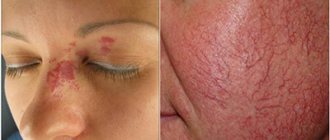Causes
The appearance of growths on different parts of the body is due to the presence of a virus in the body. HPV is considered an extremely common infection with three main routes of transmission:
- sexual;
- contact and household;
- generic.
Localization of papillomas on the oral mucosa is a common phenomenon diagnosed in adults and children. This type of growth occurs mainly due to the actions of 6 and 11 strains of papillomavirus .
Transmission of these types occurs through direct contact with an infected person and usually occurs in household settings.
Among the reasons due to which the virus can appear on the oral mucosa:
- using other people's hygiene items (towels, toothbrushes, etc.);
- eating food from poorly processed dishes of the patient;
- kissing an infected person;
- unprotected oral sexual contact.
In this case, a factor predisposing to infection is damage to the oral mucosa. Even a small amount of virus particles trapped in microcracks is enough to secure HPV in the body.
Prevention measures
After discovering growths in your mouth, you need to undergo appropriate tests to determine the strain of the virus.
After a course of treatment, to prevent relapses, it is recommended to follow simple rules:
- Regular visits to the dentist;
- Strengthening immunity and healthy lifestyle;
- Use of barrier contraception methods during sexual intercourse;
- Regular visits to the doctor for examination;
- If an oncogenic type of HPV is detected, observation by an oncologist is indicated.
If you do not take care of your health and do not pay attention to the appearance of tumors in the oral cavity, this can lead to the growth of growths on the internal organs.
It is better to get rid of papillomas at the initial stage of the disease. This will not get rid of HPV forever, but timely treatment and the right lifestyle will help achieve stable remission.
>
Types and forms
Doctors divide emerging papillomas into two forms: single growths and multiple ones (papillomatosis). The number of tumors may gradually increase as the disease progresses. Their size also becomes larger over time.
Based on the type of origin, growths are divided into 3 groups:
- Traumatic. Appear after injury to the oral mucosa due to mechanical or chemical influences. The peculiarity of this type of growth is that their growth usually stops after the cause is eliminated.
- True. Formed due to disruption of cell functioning. Their growth and division mechanisms stop working as usual. Typically, such growths are localized in distant areas of the cheeks, which can make self-diagnosis of the disease difficult.
- Viral. This type occurs directly due to the action of the papillomavirus. After infection, it can take from several weeks to several years, so it can sometimes be difficult to determine the cause of papillomas.
Scheme of human papillomavirus infection
Regardless of the type of growth, the patient should be tested for the presence of HPV in the body.
Can they appear in the sky?
Modern medicine knows more than a hundred types of HPV, including oncogenic ones. The virus is highly contagious, with about 80% of humanity now infected. External signs of papillomavirus are warts of the skin, mucous membranes - condylomas, papillomas, including squamous cells - developing on the palate and the entire oral cavity, larynx.
Papillomas of the palate are located on a narrow or wide base, the growths are multiple and sometimes spread to the larynx. According to medical facts, among patients with benign tumors of the pharynx, men aged 20 to 45 years predominate. Appearing on the soft or hard palate, growths often cause severe discomfort to the patient and require prompt removal.
What they look like
Papillomas are a small round-shaped neoplasm with a small stalk and a wide surface. Their size, as a rule, does not exceed 2 cm , but in advanced cases this figure may increase. The color of papilloma is usually pale pink or flesh-colored. The mucous membrane does not change its color, but in some cases it may become paler. This occurs due to keratinization of the epithelium. External trauma, such as biting, can cause the papilloma to change color to darker due to the hemorrhage that occurs.
When palpating the growth, the patient does not feel pain; his health is usually normal. If papillomas are constantly injured, lesions may appear on them, indicating the possibility of oncology.
Flat papillomas
The growths are round, elongated, oval in shape, rising above the skin level by 1–2 millimeters. Flat papillomas are localized around the mouth, on the face, and the upper half of the body. Sometimes papillomas form on the neck.
These papillomas are found on the labia, cervix in girls, penis in men, in the rectum, near the anus. These formations are located in groups and merge with each other. Flat, flesh-colored papillomas, sometimes slightly darker than the rest of the skin, are formed under the influence of 10, 49, 28 types of papillomavirus.
Locations in the mouth
Growths can appear throughout the oral mucosa, affecting a variety of places:
- Papillomas on the tongue. Usually it is the tongue that first suffers from the effects of the papillomavirus. Small bumps or white granularity begin to appear on it. The growths can be either multiple and small, or single but large. In the latter case, the patient may experience not only discomfort, but also pain.
On the tongue, papillomas can appear on the tip or on the sides. Growths located under the tongue are also common. Much less often, neoplasms can be seen on the vine. The color of the growths can vary: from pale pink to deep red.
- Papillomas in the throat. In this area, diagnosing the presence of a problem is quite difficult, since the growths do not cause pain in patients and do not interfere with the flow of food. A distinctive feature of these neoplasms is frequent soreness and some discomfort, which is rarely paid attention to.
If the papilloma in the throat begins to enlarge, it can lead to difficulty swallowing food. Sometimes this is reflected in the patient’s voice, which gradually becomes quieter. The neoplasm here looks like a small bump, rough to the touch. Most often it appears in the tonsil area.
- Laryngeal papilloma. The most dangerous type of growths is in the mouth area. Such papillomas interfere with breathing, as a result of which the patient may experience oxygen starvation.
- Papilloma on the lip. The growth that appears in this area is not life-threatening, but it causes a lot of inconvenience to the patient. The tumor is located in a conspicuous place, so the person experiences problems of an aesthetic nature. In addition, the papilloma, which increases in size, can be injured while eating or accidentally touched by hands.
- Papilloma on the gum. This variety usually does not cause any inconvenience to the owner and can go unnoticed for a long time. However, the growth can be injured during brushing, which will lead to negative consequences in the future.
The presence of some types of papillomas is difficult to diagnose independently. Therefore, if you suspect a problem, you should contact a specialized specialist.
Diagnostics
Diagnosis of the disease begins with collecting anamnesis and external examination of the oral mucosa. Based on this, a preliminary diagnosis can be made, which must later be confirmed using a special study.
If the nature of the growth is viral, strains of papillomavirus will be detected in the patient’s body. Their presence can be checked using PCR diagnostics, aimed at determining the strain and viral load on the body. In some cases, a histological examination is prescribed to determine the good quality of the material taken.
Removal methods
Removing papillomas in the mouth area requires special delicacy. Traditional removal methods, cryodestruction and electrocoagulation, are not recommended for such growths, as they can injure the mucous membrane and affect healthy tissue.
The best option is laser removal, which can be performed anywhere the papillomas are located.
This also applies to laryngeal tumors, which are considered quite difficult to remove. The area of action of the laser beam is very limited, due to which local destruction of growths is carried out. This method is considered safe and the most progressive to date. Before the operation, anesthesia is first administered so as not to cause great discomfort to the patient.
In severe cases, surgical methods can be used. Such operations are typical for large papillomas that cause significant pain to the patient. They can merge into associations, which makes them difficult to remove with targeted techniques.
How to remove papilloma on the tongue, see our video:
Treatment
The goal of any treatment is not only to get rid of unwanted growths. In addition, therapy performs such tasks as:
- strengthening the immune system;
- reduction of viral activity;
- reducing the risk of relapse.
For this, the patient is prescribed antiviral drugs, used topically, if the papillomas are located on the lips. As a rule, this is Acyclovir ointment in combination with various mouthwashes - Miramistin, Chlorhexidine, etc. This helps reduce the concentration of the virus in the affected area.
Immunomodulatory therapy is necessary to correct the state of the immune system, which is responsible for naturally containing the virus. Such drugs include Isoprinosine, Allokin-alpha, Panavir, etc.
It is important to combine drug therapy with the removal of all existing tumors. Otherwise, the treatment will give a temporary effect with a high risk of reappearance of papillomas.
The child has
Symptoms of human papillomavirus development in children are the same as in adults. However, they do not yet have the immune defense that inhibits the development of the virus. As a result, tumor growth can be very rapid and aggressive. If the child is very young, diagnosis is difficult due to the lack of complaints, and the disease can only be identified thanks to the vigilance of the parents.
Children of different ages are characterized by the development of laryngeal papillomatosis if the mother is infected with HPV.
During natural childbirth, the risk of transmitting the virus to the fetus is very high. And, as a rule, papillomavirus manifests itself in the mouth area.
It is important to understand that high-quality removal of growths is only possible under the supervision of a specialist. Independent attempts to remove papillomas can lead to trauma to the sensitive oral mucosa.
Consultation with our practicing dermatovenerologist:
Plantar
People with these formations are infected with HPV types 1, 2, 4. The growths are similar to dry calluses, but have a number of characteristic differences.
The skin pattern is preserved on calluses, absent on the surface of papillomas, the latter are smooth. The formation caused by papillomavirus is painful, the discomfort intensifies when wearing compressive shoes. Black dots are visible inside the papilloma, which are absent in calluses.
Neoplasms sometimes destroy on their own, which more often occurs in children. Sometimes small bubbles are noticeable around the tumor. The latter turn into new papillomas over time.
We suggest you read: If there is a piece of tooth left after extraction











